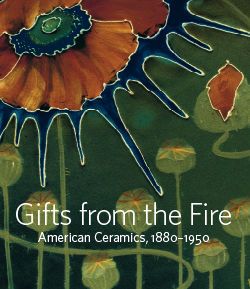Vase
Charles Fergus Binns American, born England
Charles Fergus Binns can be considered the father of American art and studio pottery, and one of the most influential educators in the field of ceramics in the United States. A product of the English pottery industry—his father was art director and co-managing director of the celebrated Royal Worcester Porcelain Works in Staffordshire—the young Binns perfected his skills in clay before immigrating to the states in 1897. He first settled in Trenton, New Jersey, which had a thriving ceramics industry, and served as an advisor to a number of firms. He is best known, however, for his role in the newly formed New York State School of Clay-Working and Ceramics (now the New York State College of Ceramics at Alfred University), the first American institution to grant a degree in ceramics. The program he led was the most renown in the country, and he trained and mentored numerous art potters, including Arthur Baggs, of the Marblehead Pottery, and Frederick Walrath. For his own work, Binns eschewed surface decoration in favor exquisitely thrown vessels covered in glazes he perfected. He worked in this mode throughout his long career. This vase, for example, is a well-proportioned, simple waisted form, but majestic in its applied glazes—meticulous hare’s breath glaze turning from brown to deep blue to pale blue-green. The Metropolitan Museum honored Binns’s achievements with a retrospective memorial exhibition in 1935.
Due to rights restrictions, this image cannot be enlarged, viewed at full screen, or downloaded.


